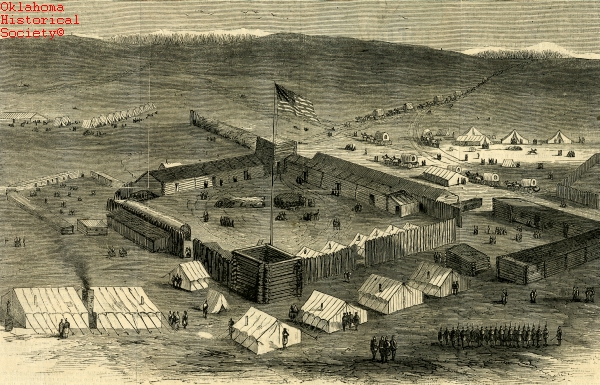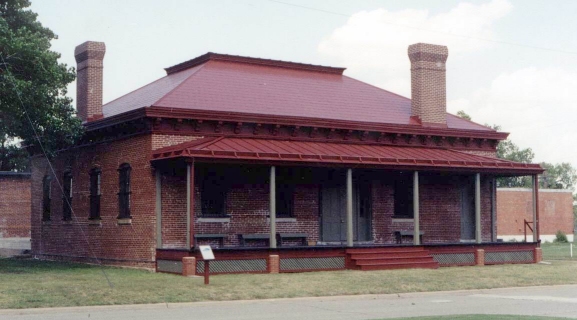
The Encyclopedia of Oklahoma History and Culture
FORT SUPPLY.
Fort Supply was located in the western part of the Cherokee Outlet in present Woodward County, Oklahoma. Originally named Camp Supply, it was established on November 18, 1868, as the supply base for Maj. Gen. Philip H. Sheridan's winter campaign against the American Indian tribes of the southern Great Plains. It was from Camp Supply that Lt. Col. George Armstrong Custer and the U.S. Army Seventh Cavalry marched south and destroyed the Cheyenne village of Chief Black Kettle at the Battle of the Washita on November 27, 1868.
Camp Supply was the temporary location of the Cheyenne and Arapaho Indian Agency in 1868 and 1870. A primary function of the camp was to protect the Cheyenne and Arapaho Reservation from incursions and depredations committed by whites. Another important duty was to protect travelers and citizens of southern Kansas from American Indian hostilities. The post saw renewed large-scale activity as a supply depot for army operations in Indian Territory and the Texas Panhandle during the Red River War of 1874–75. The camp's name was changed to Fort Supply in December 1878 in recognition of its permanent status as a military post.
Soldiers at Fort Supply were called upon to escort cattle herds north along the trails from Texas that crossed western Indian Territory. Cavalry and Indian scouts patrolled the Cherokee Outlet's large cattle ranches that occupied leases in the region during the early 1880s. From 1879 through the 1880s troops from Fort Supply were ordered to expel boomers illegally entering the Cherokee Outlet. The soldiers' last significant task was to serve as a police force during the public land openings of the late 1880s and the opening of the Cherokee Outlet in 1893.
Fort Supply was officially closed in September 1894 and was turned over to the Department of the Interior on February 26, 1895. In May 1908 the first patients arrived at the Western Oklahoma Hospital, which used the old post's buildings and grounds as the state of Oklahoma's first mental health facility. The grounds of the old post are also occupied by Western State Psychiatric Center and William S. Key Correctional Center. The Fort Supply Historic District was listed in the National Register of Historic Places in 1971 (NR 71000675).







